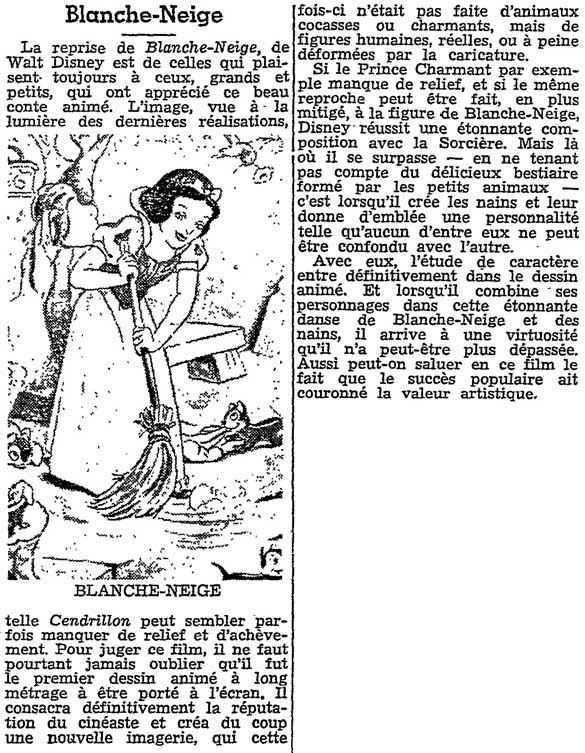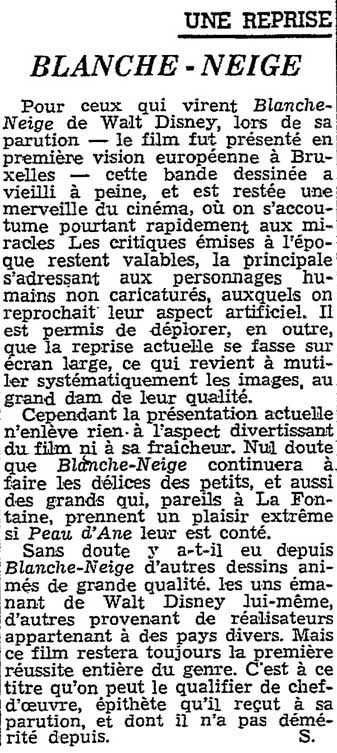“Le Soir” is a Belgian French-language generalist daily newspaper founded in 1887 by Émile Rossel. It is still published today and has thus witnessed all the releases of Snow White and the Seven Dwarfs. The article from August 10, 1951, is somewhat critical of the film’s quality, following the release of Cinderella. The 1962 article claims that Brussels was the first city in Europe to see Snow White, but it also confirms that the projection standards of the 1960s required cropping the top and bottom of the image, which the author laments.

“Snow White” by anonymous (August 10, 1951)
The re-release of Snow White by Walt Disney is one of those that still appeals to both the young and the old who have appreciated this beautiful animated tale. When viewed in light of the latest productions, such as Cinderella, the image may sometimes seem to lack depth and finish. However, to judge this film, one must never forget that it was the first full-length animated feature to be brought to the screen. It definitively established the filmmaker’s reputation and, in doing so, created a new imagery, which this time was not made of comical or charming animals, but of human figures, real or barely distorted by caricature.
For instance, if the Prince Charming lacks depth, and if the same criticism, though less severe, can be made of Snow White’s character, Disney achieved an astonishing composition with the Witch. But where he truly surpasses himself—setting aside the delightful bestiary of small animals—is in creating the dwarfs and immediately giving each one a personality so distinct that none can be confused with another.
With them, character study definitively enters the realm of animated film. And when he combines his characters in the astonishing dance of Snow White and the dwarfs, he achieves a virtuosity that he perhaps never surpassed. Thus, one can acknowledge in this film the fact that popular success has crowned its artistic value.
“A re-release: Snow White” by S. (December 21, 1962)
For those who saw Snow White by Walt Disney when it was first released — the film was presented in its European premiere in Brussels — this animated feature has barely aged and has remained a marvel of cinema, where one quickly becomes accustomed to miracles. The criticisms made at the time remain valid, the main one addressing the non-caricatured human characters, which were criticized for their artificial appearance. It is also regrettable that the current re-release is shown on a widescreen, which systematically mutilates the images, much to the detriment of their quality.
However, the current presentation does not diminish the film’s entertaining aspect or its freshness. There is no doubt that Snow White will continue to delight children, as well as adults who, like the fabulist Jean de La Fontaine, take great pleasure if “Donkeyskin” is told to them.
Undoubtedly, there have been other high-quality animated films since Snow White, some from Walt Disney himself, others from directors in various countries. But this film will always remain the first complete success of the genre. It is for this reason that it can be called a masterpiece, a title it received upon its release and which it has not lost since.

